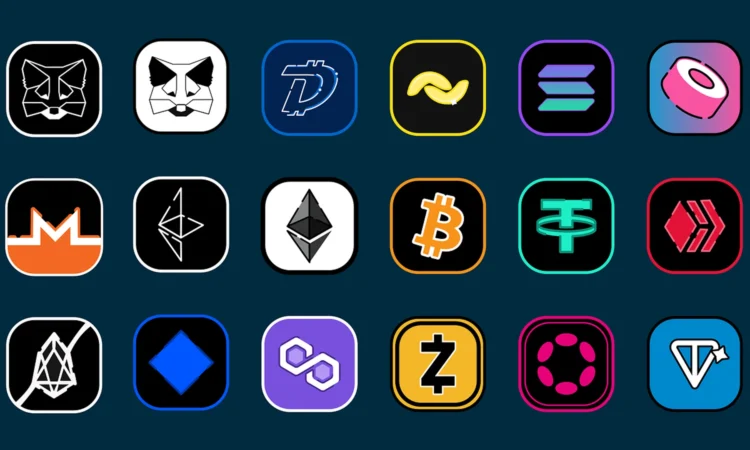
The region’s digital asset revolution doesn’t require abandoning financial discipline, it requires upgrading trust for the digital age
WITH a few simple taps and low barriers to entry, cross-border money movement and fractionalising investments have become faster, simpler and more accessible than ever. Digital assets and digital currencies have moved beyond experimentation – they are scaling rapidly and becoming foundational to the financial infrastructure of tomorrow.
Asia is leading this transformation, with regional initiatives reflecting a strong commitment to modernising financial infrastructure while upholding regulatory integrity and reinforcing systemic trust.
The lesson is clear: For digital assets to support global capital flows, they must meet institutional standards of transparency, security and oversight. Asia’s regulators have responded not by stifling innovation, but by raising the bar for responsible participation, guided by a philosophy of “innovation within trust”.
This philosophy is now shaping how central banks and financial institutions – including OCBC – are designing the next generation of digital finance that is not only more efficient and inclusive, but also anchored in trust and accountability.
The new monetary infrastructure
Digital currencies – including central-bank-issued ones or CBDCs, regulated fiat-backed stablecoins or tokenised deposits – are emerging as the foundational settlement layer for a tokenised economy.
Stablecoins, for example, are gaining traction as reliable instruments for value transfer, with market capitalisation surpassing US$300 billion in October 2025.
Singapore and Hong Kong are leading the charge. The Monetary Authority of Singapore (MAS) is exploring programmable “purpose-bound money” through Project Orchid, while also proposing a Stablecoin Regulatory Framework that sets global benchmarks for transparency and redemption. OCBC has already applied purpose-bound money for large infrastructure projects.
In Hong Kong, the Hong Kong Monetary Authority (HKMA) is piloting wholesale CBDCs and a stablecoin licensing regime, with its e-HKD initiative testing programmability across consumer and business use cases.
Malaysia and Indonesia are also progressing, with wholesale CBDC exploration and successful proof of concepts such as Indonesia’s Garuda Project.
Tokenisation: unlocking market efficiency
Tokenisation, the process of turning traditional financial assets into digital assets on blockchains, is rapidly maturing in Asia.
Singapore’s Project Guardian is pioneering the tokenisation of bonds, funds and foreign exchange transactions through collaborations with banks and asset managers. OCBC’s US$1 billion digital commercial paper programme, issued on blockchain, showcases how regulated tokenised issuance can enhance funding agility while preserving robust investor protection.
Hong Kong’s digital green bond, supported by the HKMA, demonstrates how blockchain can transform capital markets. Such efforts point to a shared goal: Financial markets that are faster, more transparent and open to broader investor participation, yet firmly anchored in regulatory credibility.
Interoperability and governance
As digital asset markets grow, interoperability will be key to unlocking their full value. Tokenised assets – whether bonds or currencies – must transact seamlessly across blockchains under shared governance frameworks.
Singapore’s Project Guardian and Hong Kong’s participation in the Bank for International Settlements (BIS) mBridge are advancing cross-border settlements using tokenised instruments and multi-CBDC platforms.
Governance remains critical. Asia is setting global standards by embedding compliance directly into blockchain design, ensuring that innovation is enmeshed with accountability.
Asia’s structural advantages
While the United States and Europe lead in digital currency development, Asia offers advantages as a test bed for digital finance in these areas:
- Trade and remittance intensity: Intra-Asian trade makes up nearly 60 per cent of the region’s total, driving constant cross-border settlement needs.
- Digital adoption: Mobile-first economies and government-backed digital-ID systems allow smoother blockchain integration.
- Policy coordination: Forums such as Asean+3, the BIS Innovation Hub Centre in Hong Kong, and the Asean Bankers Association are aligning on data sharing, risk and KYC (know your customer) standards.
- Private-sector momentum: Regional banks, sovereign funds and asset managers are actively investing in tokenisation pilots and digital custody infrastructure.
Singapore stands out thanks to the MAS’ regulatory clarity and its public-private innovation model. Hong Kong brings deep capital market experience and connectivity to Greater China. Malaysia’s inclusive approach is an ideal test bed for how digital infrastructure can serve smaller institutions as well as small and medium-sized enterprises.
Together, these jurisdictions form a complementary ecosystem – an Asian digital-finance corridor that balances prudence with progress.
From innovation to infrastructure
To scale responsibly, digital asset adoption must focus on five pillars: secure custody; regulatory alignment; technology interoperability; client enablement; and collaborative standards. Banks will play a pivotal role in translating blockchain’s technical potential into institutional reliability.
By 2035, digital assets and digital currencies could underpin much of Asia’s financial infrastructure. Cross-border settlements could occur in seconds rather than days, powered by CBDCs or regulated stablecoins. Capital market transactions could become “atomic” – executed, cleared and settled simultaneously.
In this digital-led future, banks will evolve from intermediaries to infrastructure providers, issuing, safeguarding and connecting digital assets with the same trust they bring to traditional markets.
Asia’s digital asset revolution does not require abandoning financial discipline. It requires upgrading trust for the digital age. In this respect, Singapore, Hong Kong, Malaysia and Indonesia are showing the world how responsible innovation can scale.
The writer is head of digital assets, global markets, OCBC
Decoding Asia newsletter: your guide to navigating Asia in a new global order. Delivered to your inbox. Free.






